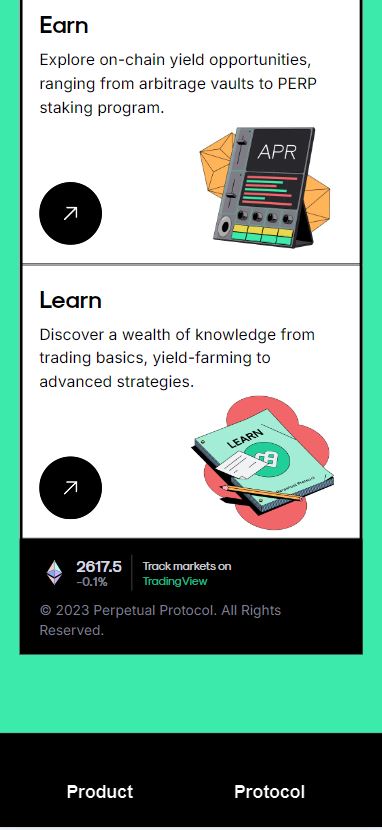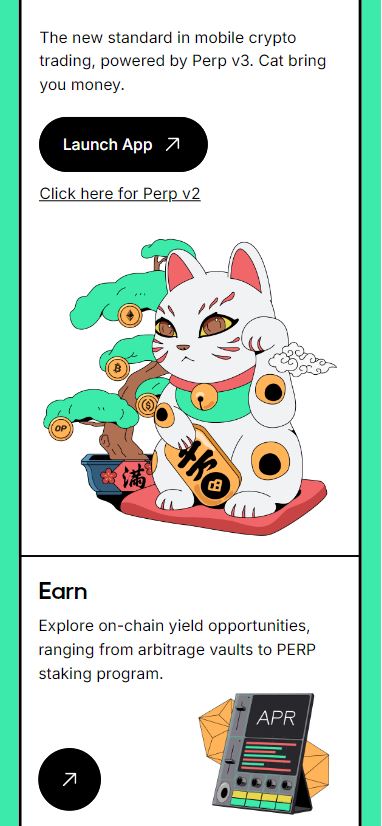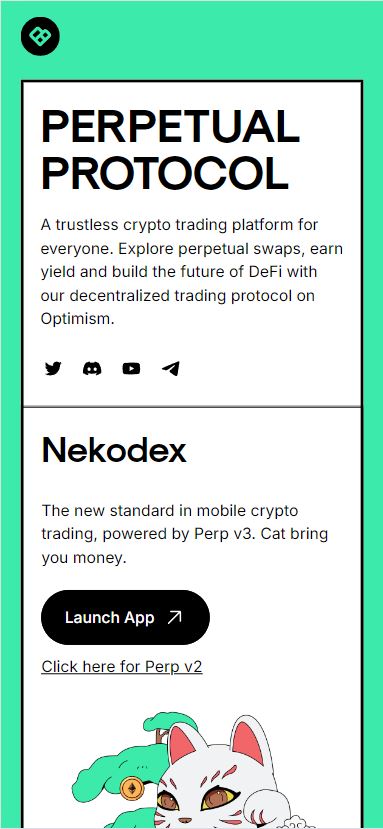About Perpetual Protocol (PERP)
What is Perpetual Protocol (PERP)?
Perpetual Protocol (PERP) is a decentralized exchange (DEX) designed for trading perpetual contracts, allowing users to open leveraged positions on various assets like BTC, ETH, DOT, SNX, YFI, and more. Perpetual contracts allow users to trade with up to 10x leverage, enabling them to profit from both long and short positions without having an expiry date, which is the hallmark of these contracts.
The protocol operates on the Ethereum blockchain and xDai sidechain, ensuring non-custodial trading, meaning users retain full ownership and control of their assets throughout the trading process. Perpetual Protocol utilizes a virtual automated market maker (vAMM) to provide on-chain liquidity, with the aim of delivering low slippage and predictable pricing for users.
How does Perpetual Protocol (PERP) work?
Perpetual Protocol operates through a unique model that deviates from traditional centralized exchanges. Instead of using an order book to match buy and sell orders, the protocol uses a virtual automated market maker (vAMM), which is a decentralized system designed to maintain liquidity and low slippage. Here’s how it works:
Key Mechanisms:
- vAMM (Virtual Automated Market Maker):
- Unlike traditional exchanges that rely on order books to match trades, Perpetual Protocol’s vAMM uses a virtual pool of liquidity to enable users to trade with one another directly, without the need for centralized order matching.
- The vAMM adjusts its price based on the trades that happen in the system. When a user opens a position (e.g., going long or short), the price of the asset in the virtual market changes accordingly.
- The initial liquidity is set by the protocol operators, and the vAMM aims to provide low slippage, ensuring a smoother trading experience.
- Leverage and Positions:
- Users can take long or short positions on a range of supported assets with up to 10x leverage.
- These positions do not expire, unlike traditional futures contracts, hence the term “perpetual” in the name. Users can hold their positions indefinitely or close them at any time.
- The platform offers gas-free transactions for trades larger than 500 USDC, helping users interact with the platform efficiently.
- Settlements:
- All trades on Perpetual Protocol are settled in USDC, which is a stablecoin pegged to the US dollar. This ensures that the value of collateral remains stable during volatile market conditions.
- The platform also supports zero gas fees for transactions over 500 USDC using the xDai chain, which helps reduce the friction often associated with high Ethereum gas fees.
What are the potential use cases for Perpetual Protocol (PERP)?
Perpetual Protocol aims to be a highly accessible and efficient platform for users looking to trade perpetual contracts. The key use cases of the platform include:
- Leverage Trading:
- Users can trade with up to 10x leverage, enabling them to gain exposure to larger positions with smaller capital. This can be highly attractive for traders who want to amplify their profits from price movements.
- Decentralized Derivatives Market:
- Perpetual Protocol provides a decentralized alternative to traditional centralized derivatives markets. This enables users to trade without intermediaries, ensuring more control over their trades and funds.
- Non-Custodial Trading:
- Perpetual Protocol is non-custodial, meaning users always maintain control of their assets. This is particularly important for those who value security and decentralization, as it eliminates the risks associated with centralized exchanges that hold users’ funds.
- Low Slippage Trading:
- By utilizing the vAMM model, Perpetual Protocol aims to provide low slippage, ensuring that users can enter and exit positions without large discrepancies between the expected and actual price.
- Gas-Free Transactions:
- With xDai integration, Perpetual Protocol supports gas-free trading for transactions over 500 USDC. This is a huge advantage for users looking to avoid high Ethereum gas fees.
- Governance and Staking:
- The PERP token serves as the governance token of the protocol. Users can stake their PERP tokens to participate in governance decisions, such as voting on protocol upgrades or changes.
- Stakers may also receive rewards for helping secure and grow the platform.
What is the history of Perpetual Protocol (PERP)?
Perpetual Protocol was launched by Yenfen Weng and Shao-Kang Lee, two Taiwanese cryptocurrency entrepreneurs with a vision to create a decentralized platform for perpetual contract trading. The team is primarily based in Taiwan and has received backing from notable investors such as Zee Prime Capital, Multiarrows Capital, CMS Holdings, Binance Labs, and Alameda Research.
In 2020, the project successfully raised $1.8M in seed funding to further develop the platform. Perpetual Protocol achieved several milestones in its development, including:
- Staking Pools: The introduction of staking pools allowed users to earn rewards for supporting the network.
- Limit and Stop Orders: Perpetual Protocol added features like limit orders and stop orders, expanding its trading functionality.
- Cross-Chain Interoperability: The platform plans to connect with other blockchains, enabling more users and assets to interact with the protocol.
- Dynamic Liquidity: The platform is continually working on improving liquidity mechanisms, ensuring that users can always trade without major price distortions.





















Eyad –
‘
”
Khuzaimah –
Great